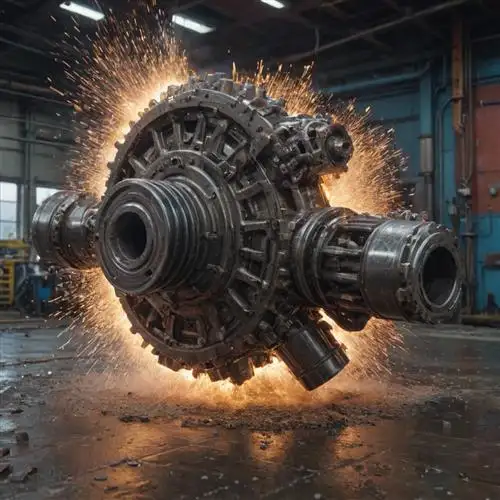
Neglecting Regular Oil Changes
One of the most critical maintenance tasks for any vehicle, including the Toyota Tundra, is regular oil changes. Skipping or delaying these changes can have severe consequences for your Tundra's engine, leading to decreased performance, reduced fuel efficiency, and even catastrophic failures down the line. When it comes to oil changes, the Tundra is no exception, and ignoring this vital maintenance task can be a costly mistake.
The recommended oil change interval for the Toyota Tundra varies depending on several factors, such as driving conditions, towing capacity, and the type of oil used. Generally, Toyota recommends changing the oil every 5,000 to 10,000 miles or every 6 to 12 months, whichever comes first. However, it's essential to consult your Tundra's owner's manual or speak with a certified Toyota technician to determine the optimal oil change schedule for your specific vehicle and driving habits.
Neglecting regular oil changes can have several detrimental effects on your Tundra's engine. Over time, the oil in your Tundra breaks down, losing its ability to effectively lubricate and protect the engine's moving parts. This can lead to increased friction, which generates heat and can cause premature wear on critical components like bearings, pistons, and the crankshaft. Ultimately, this can result in decreased fuel efficiency, reduced engine power, and even complete engine failure if left unaddressed.
Another significant consequence of neglecting oil changes is the buildup of sludge and other contaminants in the engine. As the oil degrades, it can leave behind deposits and buildup that can clog oil passages, restrict oil flow, and reduce the engine's overall efficiency. This can lead to increased oil consumption, decreased oil pressure, and further damage to engine components.
Ignoring Tire Rotation and Alignment
Maintaining the proper tire rotation and alignment on your Toyota Tundra is crucial for ensuring optimal performance, fuel efficiency, and the longevity of your tires. Neglecting these essential maintenance tasks can lead to a host of problems that can be both costly and dangerous.
Tire rotation is the process of moving your tires to different positions on your vehicle, such as from the front to the rear or diagonally. This helps to ensure even wear across all four tires, which can extend their lifespan and improve your Tundra's handling and stability. Failing to rotate your tires at the recommended intervals, typically every 5,000 to 7,500 miles, can result in uneven tire wear, decreased fuel economy, and increased risk of a blowout.
Wheel alignment, on the other hand, refers to the adjustment of the angles of your Tundra's wheels in relation to each other and the vehicle's frame. Proper alignment ensures that your tires are pointing in the correct direction, which can significantly impact your driving experience. Misaligned wheels can cause your tires to wear unevenly, leading to a wandering or pulling sensation while driving, as well as increased fuel consumption and decreased handling performance.
It's important to have your Tundra's wheel alignment checked regularly, especially after any major suspension or steering modifications, or if you've hit a pothole or curb. Neglecting wheel alignment can result in uneven tire wear, increased tire noise, and even the premature failure of your vehicle's suspension components.
Skipping Brake System Inspections
The brakes on your Toyota Tundra are critical for your safety and the safety of others on the road. Neglecting regular brake system inspections can lead to a host of problems that can compromise your vehicle's performance and put you at risk. Here are some of the key reasons why you should never skip these essential maintenance tasks:
Wear and Tear: Your Tundra's brake pads, rotors, and calipers are subject to constant wear and tear with every use. Over time, these components can become worn down, reducing their effectiveness and increasing the risk of brake failure. Regular inspections allow your mechanic to identify any issues and replace worn parts before they become a serious problem.
Brake Fluid Contamination: The brake fluid in your Tundra's system can become contaminated with moisture, dirt, and other impurities over time. This can lead to a decrease in the fluid's boiling point, which can cause the brakes to feel spongy or even fail completely under heavy use. Flushing the brake fluid and replacing it with fresh fluid is a critical maintenance task that should be performed at regular intervals.
Corrosion and Damage: The components of your Tundra's brake system are exposed to a variety of environmental factors, including moisture, salt, and road debris. Over time, these elements can cause corrosion and other forms of damage that can compromise the system's performance. Regular inspections allow your mechanic to identify any signs of corrosion or damage and take the necessary steps to address them.
Brake System Modifications: If you've made any modifications to your Tundra's brake system, such as upgrading the pads or rotors, it's essential to have the system inspected regularly. These modifications can introduce new stresses and strains on the system, and failure to address them can lead to premature wear or even brake failure.
Neglecting Transmission Fluid Changes
The transmission is the unsung hero of your Toyota Tundra's powertrain. It's responsible for transmitting the engine's power to the wheels, ensuring smooth acceleration and seamless gear shifts. However, many Tundra owners overlook the importance of regular transmission fluid changes, which can lead to costly problems down the road.
Transmission fluid is the lifeblood of your Tundra's transmission. It lubricates the intricate components, prevents wear and tear, and helps maintain optimal operating temperatures. Over time, this fluid can break down, becoming contaminated with dirt, debris, and metal particles. Neglecting to change the fluid at the recommended intervals can cause the transmission to work harder, leading to increased wear, slipping, and even complete failure.
The recommended transmission fluid change interval for the Toyota Tundra varies depending on the year, model, and driving conditions. For most Tundras, the manufacturer suggests changing the fluid every 30,000 to 60,000 miles. However, if you frequently tow heavy loads, drive in stop-and-go traffic, or operate your Tundra in extreme temperatures, you may need to change the fluid more frequently.
- Increased wear on transmission components: As the fluid degrades, it loses its lubricating properties, leading to increased friction and wear on gears, bearings, and other critical components.
- Transmission slippage: Worn or contaminated fluid can cause the transmission to slip between gears, leading to a loss of power and potentially damaging the transmission.
- Reduced fuel efficiency: A malfunctioning transmission can decrease your Tundra's fuel economy, costing you more at the pump.
- Shortened transmission lifespan: Neglecting fluid changes can significantly reduce the lifespan of your Tundra's transmission, requiring an expensive rebuild or replacement sooner than necessary.
Ignoring Coolant System Maintenance
The Toyota Tundra's coolant system is a crucial component that ensures the engine operates at the optimal temperature, preventing overheating and potential catastrophic failures. Neglecting the regular maintenance of this system can lead to a host of problems that can be both costly and time-consuming to address. One of the most common mistakes Tundra owners make is failing to monitor and maintain the coolant levels and condition.
Letting the coolant level drop too low can cause air pockets to form in the system, leading to hot spots and uneven cooling. This, in turn, can result in accelerated wear on the water pump, hoses, and other components, ultimately shortening the lifespan of the engine. Additionally, old or contaminated coolant can become acidic, corroding the metal components in the system and causing leaks, clogs, and even engine block damage.
To avoid these issues, it's essential to follow the manufacturer's recommended coolant replacement schedule, which typically ranges from 30,000 to 60,000 miles, depending on the type of coolant used. It's also crucial to inspect the coolant hoses and connections regularly for any signs of wear, cracking, or leaks, and address any issues promptly. Replacing the thermostat, which regulates the flow of coolant, is another important maintenance task that should not be overlooked.
In addition to maintaining the coolant system, Tundra owners should be mindful of the type of coolant used. The Tundra is designed to operate with a specific blend of coolant, and using the wrong type can lead to compatibility issues and accelerated degradation of the system components. Always refer to the owner's manual or consult with a Toyota-certified technician to ensure you're using the correct coolant for your Tundra.
Failing to Replace Worn-Out Wiper Blades
Your Toyota Tundra's wiper blades are the unsung heroes of your vehicle's maintenance. These humble components play a crucial role in ensuring your safety and visibility on the road, yet they are often overlooked. Failing to replace worn-out wiper blades can lead to a host of problems, from reduced visibility in inclement weather to potential safety hazards.
Wiper blades are subject to constant wear and tear, and their performance can degrade over time. Exposure to the elements, UV rays, and the repetitive motion of wiping can cause the rubber to become stiff, cracked, or torn. When this happens, your wiper blades become less effective at clearing away rain, snow, or debris, compromising your ability to see clearly while driving.
Replacing your Tundra's wiper blades on a regular basis is a simple yet vital maintenance task. Experts recommend changing them at least once a year, or more frequently if you live in an area with harsh weather conditions or if you notice any signs of wear and tear, such as streaking or chattering.
When it comes to wiper blade replacement, it's important to choose high-quality, OEM-approved blades that are specifically designed for your Tundra model. Generic or low-quality blades may not fit properly or provide the same level of performance and durability as the original equipment.
Neglecting to replace worn-out wiper blades can have serious consequences. Diminished visibility can make it more difficult to react to hazards on the road, increasing the risk of accidents. Additionally, the decreased performance of your wiper blades can lead to more frequent windshield cleaning, which can be time-consuming and inconvenient.

















